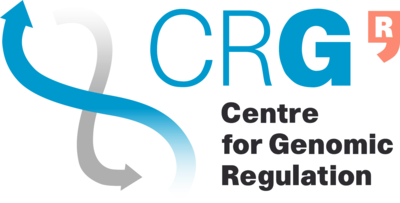CRG PhD Course 2017 Introduction to Statistics in R
From Bioinformatics Core Wiki
Revision as of 13:18, 2 October 2017 by Jponomarenko (Talk | contribs)
Contents
Course Description
This introductory course to statistics and R is offered in 3 consecutive modules (please see Course Syllabus below), each consisting of A two-hour practicum in a computer class, using R Studio.
Course Objectives
To introduce the basic concepts of statistics and how they can be applied to real-life datasets using R. The students will produce their first scripts that can be re-used when they start analyzing their own data. Knowledge of statistics or R is not required for taking this course. However, familiarity with the material in the previous modules is recommended if the modules are not taken in a sequence.
Course Instructors
- Sarah Bonnin (Module I) sarah.bonnin@crg.eu
- German Demidov (Module II) german.demidov@crg.eu
- Julia Ponomarenko (organizer, Module III) julia.ponomarenko@crg.eu
Time and Location
- Oct 5, 10, 11, 2016. 11:00 - 13:00. PRBB Building. Boinformatics classroom. 468. 4th floor. The hotel wing.
Course Syllabus, Schedule, and Materials
MODULE I. Introduction to R. Basic functions and plotting. Oct 5, 2016.
- Introduction to R programming language:
- Introduction to R Studio.
- Data types, variables, packages, handling files/scripts,functions.
- Basic plots in R. The ggplot2 package.
- Exploratory data analysis: bar-plot, histogram, box-plot, scatter-plot.
- R Studio ggplot2 cheatsheet
- R Markdown. How to produce html / pdf / Word reports with R.
- R Studio RMD cheatsheet
MODULE II. Introduction to Probability & Hypothesis testing. Oct 10, 2016.
- Independence, conditional probability, Bayes formula.
- Distributions, population mean and population variance.
- Central Limit theorem and the Law of large numbers.
- The concept of hypothesis testing, type I and type II error, false discovery rate.
- Significance and confidence level, p-value. Confidence intervals. One-sided and two-sided tests.
- One-sample and two-sample tests for independent and matched samples with known and unknown variance.
- Student t-distribution, assumption of normality.
- Test for proportions.
- Download the zip-file of the module's materials.
MODULE III. Non-parametric tests & Linear regression. Oct 11, 2016.
- Non-parametric tests: Sign test, Wilcoxon sum of ranks test (Mann-Whitney U-test), Wilcoxon signed rank test, Kruskal-Wallis test.
- Kolmogorov-Smirnov (KS) test. Shapiro test for normality. QQ-plot.
- Data transformation.
- Download the zip-file for this part of the practicum.
- Simple linear regression model, residuals, degrees of freedom.
- Interpretation of the slope, correlation, and determination coefficients.
- Standard error and statistical inference in simple linear regression model.
- Analysis of variance (ANOVA). One-way and two-way ANOVA.
- Download the zip-file for the practicum on linear regression and ANOVA.
External Resources
- Nature Web-collection "Statistics for Biologists"
- 100 Statistical Tests.pdf - ResearchGate - just search Google to get a link
- Book "Basics of Statistics" by Jarko Isotalo
- "Introduction to Probability and Statistics using R" by G. Jay Kerns
- R Tutorials by William B. King
- Tutorials "R for basic statistics"
- Blog "R-bloggers"
- StatsBlogs
- Blog "Learning R"
- Blog "R you ready?"
- "R-statistics blog"
- Self-paced online courses from UC Berkeley: Descriptive Statistics. Probability. Inference.
- Online book recommended for the UC Berkeley courses
- Self-paced online course "Explore Statistics with R"
- Online course from Stanford "An Introduction to Statistical Learning with Applications in R"
- Self-paced online course from Microsoft "Intro to R programming"
- Self-paced online course from Harvard "Statistics and R"
- Self-paced online course from Harvard "Statistical Inference and Modeling for High-throughput Experiments"
- VIB "Basic statistics theory" course slides.
- VIB "Basic statistics in R" course. Tutorial, excercises, cheat sheets.
